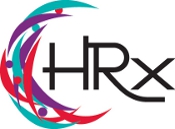 |
Examining |
…And Could Be In Your Organization
October 2005
Harrassment Tips
- Create a solid harassment policy that covers sexual harassment as well as all classes protected under state and federal EEO laws.
- Make sure it’s a good policy. Have an expert read it and edit it to make sure it includes everything required by law.
- Make sure every employee has a current copy of the policy.
- If you do not have an employee handbook with a signature sheet, have each employee sign an acknowledgment form that they’ve read and agree to abide by your harassment policy.
- Make sure everyone understands who to call if they suspect harassment. This must include multiple options for who they can contact.
- Train your managers to understand harassment law and how to respond to harassment issues, complaints and investigations.
- Determine who is going to investigate harassment claims for your organization: an internal professional or an external professional?
- Discuss the types of disciplinary action you might take depending on the circumstances.
How Arlene
Can Help
- Arlene can train your managers, customizing the training to match your policy, approach and industry issues.
- Arlene can train your employees. She will clearly explain what behavior is tolerated and what is not.
- If you don’t have a harassment policy, Arlene can create one for you.
- If you’re not sure your policy is thorough or compliant, Arlene can review it and rewrite it, if needed.
- Arlene can provide HRxpress hotline services to you and your managers, being on-call to assist you with your HR and employee relations needs.
- If you need harassment or other training, we guarantee that it will be a mix of high quality, high content and high energy. Who says harassment training can’t be fun?
If you’re not
having fun
with your
human resources,
call Arlene today
at 952-996-0975
Looking Out

Over the past few months I’ve trained more managers and employees on harassment (not the how-to, but the how not-to) than I have in yearsI’m also receiving more and more calls from clients on how to deal with harassment complaints and issues.
So what’s going on? Is there more harassment occurring in our workplaces? Are we more sensitive to and/or less tolerant of harassing behavior? Or have we become so paranoid by the media and scare tactics that we’re going to question everything?
Only you know whether there are more harassment complaints or issues in your organization. However, I researched the answer from a national perspective. There has actually been a decline in the number of formal charges received by the EEOC since its peak in 1997. In 2004, there were 17% fewer claims (13,566) than in 1997 (15,889). Interestingly, the number of harassment claims by males increased from a 9% average in 1992 and 1993 to approximately 15% of claims in 2002, 2003 and 2004.
So, with that information in mind, let’s start looking at your organization. First of all, if you think that just by having a harassment policy in your employee handbook that you’re protected from harassment lawsuits, it’s time to think differently. The courts have repeatedly stated that to help protect an organization from major financial damages, the organization must not only have a written policy but must conduct formal management training sessions to ensure they understand the legal requirements and company protocol regarding harassment. This training should occur annually. Also, without evidence of such training, companies will be hard-pressed to win a claim. So, make sure each manager who attends the training signs an attendance sheet.
California has taken the training concept a giant step further. Beginning January 1, 2005 all California companies with 50 or more employees must provide two hours of sexual harassment education to all supervisory employees before the end of 2005.
Would you comply?
Copyright © 2005 Arlene Vernon, HRx, Inc.
Looking In
So, what’s happening in your organization?Here’s sampling of questions to help you assess whether you might have a problem.
- Have you heard comments from employees about situations where they’re uncomfortable? Did you act on these concerns?
- Do your employees know that they are protected from harassment by customers, clients, vendors, and coworkers, not just from their supervisors?
- Do you have a policy that would hold its weight in court? Do you know what should be in a solid harassment policy?
- Do your managers know their obligations regarding reporting employee concerns to upper management? Do they know the financial ramifications to them and the organization if they fail to act on/investigate a claim in accordance with policy?
- Have you tolerated or ignored questionable behavior from employees or non-employees?
There are so many more questions we could ask.The bottom line is if your managers don’t know how to respond to claims or questions on harassing behavior, you are at great risk. For example, if an employee complains to a manager who fails to take action and who fails to inform senior management, your organization will still be liable for failing to respond to a harassment claim.
I’m continually amazed that after 30 years of harassment claims, “we” haven’t figured out what’s appropriate behavior in the workplace. There are still too many overt and unwelcome sexual proposals as well as violent sexual acts occurring in the workplace. I’m not sure that our basic training will get through to these extreme individuals.
But our “everyday” employees could be doing any of the following:sharing an inappropriate joke or story, giving an unwelcome hug, telling one-too-many blonde jokes, hanging a sexy photo or calendar on the wall, seeing each new employee as their dating pool, emailing jokes and photos of a sexual nature, visiting inappropriate websites, asking a coworker out repeatedly and not accepting that they’re not interested,… The list can go on.
This issue is too dangerous and costly to not be proactive.So, take an honest look into your organization, ask your coworkers, managers, and employees what’s really going on, make sure your policy is what you need, and train your people.
Copyright © 2005 Arlene Vernon, HRx, Inc.
About Arlene Vernon
Arlene Vernon, PHR, partners with small businesses as their Human Resource Xpert to create their HR systems and solve their HR problems.
If you have gaps in your HR operation, have an employee problem to solve, or want to enhance your managers’ skills, call Arlene today. Learn
how HRx can save you time and help you avoid costly HR mistakes. HRx, Inc., 574 Prairie Center Drive #135/285, Eden Prairie, MN 55344, 952-996-0975,
www.HRxcellence.com.
Subscriber Info
HRx, Inc. respects your privacy and does not give out or sell subscriber names and/or e-mail addresses. Feel free to pass this newsletter to your friends and colleagues as long as the entire newsletter is kept intact. If this newsletter has been forwarded to you, please
sign upto receive your own copy. If you wish to be taken off this list simply
send an email
Share This Article
This article is available for your use or reprinting in web sites or company communications with the agreement that Arlene’s biographical information above and a link to her website is included with the article.
